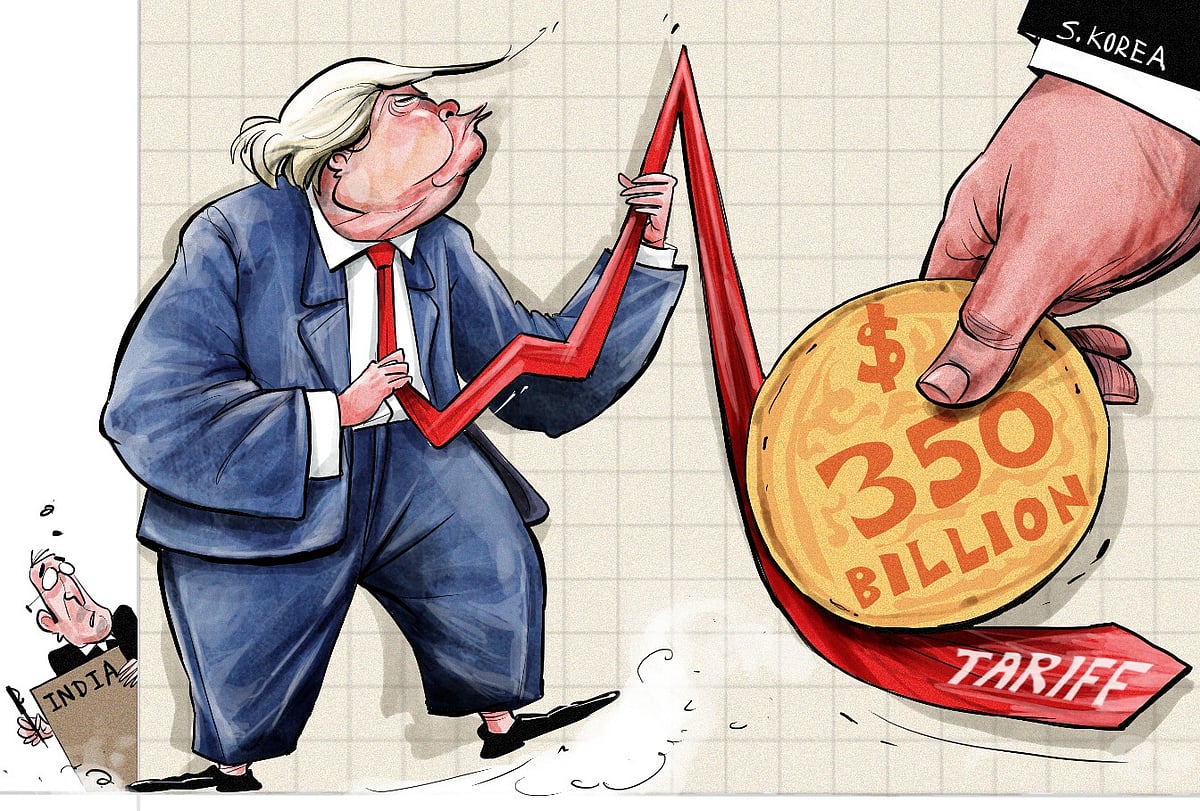Donald Trump is learning that you cannot have the cake and eat it too. His lesson comes from America’s longtime ally, South Korea. It will be one of the most important lessons of Trump’s second presidency, although faraway South Korea is only about 10 percent of the size of the United States.
India and South Korea were both equal victims of Trump’s bullying soon after he moved into the White House for the second time. The Trump administration threatened 25 percent tariff on South Korean exports to the US, the same as India. If India is “tariff king” in Trump’s words, South Korea is not way behind because of its non-tariff barriers to imports and its ‘red lines’ on rice and beef imports from America. Last year, Seoul notched up a record surplus in excess of $50 billion in trade with the US. But on the eve of Trump’s August 1 deadline for trade agreements, South Korea reached a deal that fixed a highly favourable 15 percent duty on most of its exports to the US. A beaming Trump called it a “full and complete trade deal”. At the same time, tariffs on India soared to 50 percent.
There are lessons for India from South Korea’s trade deal with the US, which is yet to be on paper and has many rough edges. But then, that is the case with many of the deals the US has agreed to with its trade partners around the world. South Korea offered to invest $350 billion in the US to get Trump to reduce duties on its exports to America by 10 percent.
India could have done something similar by taking along India Inc when Prime Minister Narendra Modi called on Trump at the White House in February. The Ambanis, Tatas, Mahindras and other corporate leaders who have prior investments in the US could have gone to the Oval Office with Modi and told Trump that they would invest big in America. India is a much bigger economy than South Korea, which is only the 13th largest in the world. Any declaration on White House grounds that India Inc would pour—or rain—money on America would have been touted by Trump on his Truth Social microblogging site as yet another feather in his cap.
After all, that is what Trump wants, not concrete results. His most trumpeted promise of a border wall with Mexico in the 2016 election is yet to be fulfilled. Trump needs frequent shots of adrenaline that will boost his limitless ego and vanity. Historically, only 12-15 percent of declared intentions to invest are finally realised worldwide. Words are cheap. India’s corporate leaders could have gotten away with words, which would have been music to the ears of the 47th US president, and later done precious little about it in the three years that are left before the US elects another occupant of the White House.
